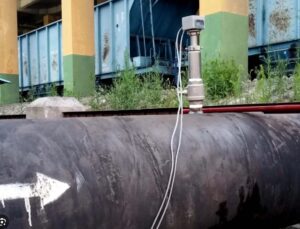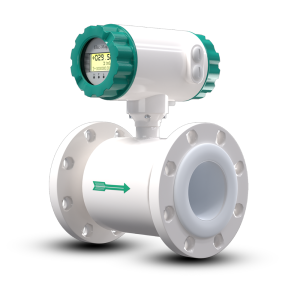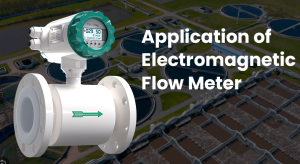When it comes to accurately measuring the flow of conductive liquids, few technologies rival the insertion electromagnetic flow meter—especially for those who need a cost-effective solution without sacrificing performance. If you’re shopping for a reliable flow meter under $1,000, this guide is for you.
In this detailed buyer’s guide, we’ll walk you through everything you need to know about insertion electromagnetic flow meters, from their core benefits and ideal applications to how to choose the best one for your needs without breaking the bank.
Let’s dive into the world of affordable precision measurement.
What Is an Insertion Electromagnetic Flow Meter?
An insertion electromagnetic flow meter is a type of non-intrusive flow sensor that measures the velocity of conductive fluids using Faraday’s Law of Electromagnetic Induction. Unlike full-bore mag meters, insertion meters only require a small sensor inserted into the pipe wall, making them easier to install and more affordable—especially for larger pipe diameters.
Key features include:
-
Compatibility with conductive fluids like water, wastewater, acids, and slurries
-
No moving parts, making them ideal for dirty or corrosive environments
-
Excellent for large-diameter pipes (up to 120 inches)
-
Lower cost of ownership and minimal maintenance
Why Choose Insertion Over Full-Bore Flow Meters?
If you’re working with a limited budget or large pipe sizes, insertion electromagnetic flow meters offer unmatched value.
Advantages of insertion meters include:
-
Lower upfront cost: Full-bore meters can cost thousands, while insertion types are often under $1,000.
-
Minimal pipe modification required: No need to cut or replace large sections of piping.
-
Hot-tap installation capability (in many models), meaning no shutdown required.
-
Scalability for large facilities, utilities, and industrial networks.
-
Flexibility with vertical or horizontal pipe installation.
Top 10 Features to Look for in a Sub-$1,000 Insertion Mag Meter
Not all affordable meters are created equal. To ensure you’re getting maximum value, look for these key features when comparing models:
1. Pipe Size Compatibility
Ensure the meter supports your pipe size—commonly ranging from 2” to 120”. Most insertion meters are adjustable and can handle a wide diameter range.
2. Accuracy and Repeatability
A good insertion mag meter will provide ±1% accuracy or better. Check for repeatability specs as well, especially for applications requiring consistent monitoring.
3. Output Signal Options
Look for models with multiple output signals like:
-
4-20 mA
-
Pulse
-
Modbus/RS485
These make integration into SCADA, PLC, or DCS systems seamless.
4. Display Type
A local LCD display allows for on-site readings and diagnostics. Backlit or multi-line displays are a bonus.
5. Conductivity Requirements
Check the minimum fluid conductivity, typically around 5 μS/cm. This ensures compatibility with your fluid type.
6. Material Durability
Ensure the electrodes and probe materials are suitable for your environment. Stainless steel is standard, but harsher chemicals may require Hastelloy or titanium options.
7. Installation Type
If your system must remain operational, choose a hot-tap capable model. This allows installation without shutting down flow.
8. Power Options
Common choices include:
-
24VDC
-
110/220VAC
-
Battery-powered for remote locations
Choose based on power availability at your site.
9. Certifications and Compliance
Check for IP65/IP67/IP68 ratings, and if needed, CE, RoHS, or ISO certifications for compliance in regulated industries.
10. Manufacturer Warranty
Even in the sub-$1,000 category, a 1 to 2-year warranty is standard. Choose a supplier that backs their product.
Common Applications for Insertion Electromagnetic Flow Meters
These affordable flow meters are widely used in:
-
Municipal water and wastewater treatment
-
Irrigation and agriculture
-
Chemical manufacturing
-
HVAC systems
-
Food and beverage processing
-
Pulp and paper industries
-
Mining and slurry applications
Anywhere you need to monitor liquid flow reliably on a budget, an insertion mag meter fits the bill.
Top Brands Offering Sub-$1,000 Insertion Flow Meters
Here are some brands known for providing quality insertion electromagnetic flow meters under $1,000:
1. Best Instrument
-
Known for rugged, easy-to-install models.
-
Commonly used in water, irrigation, and industrial environments.
2. Omega Engineering
-
Offers versatile models with strong data integration features.
3. Badger Meter
-
Popular in municipal and industrial sectors.
-
Competitive pricing and US-based support.
4. McCrometer (McMag Insertion Series)
-
Focused on high-accuracy agricultural and municipal use.
-
Often hot-tap compatible.
5. FLOMEC / Great Plains Industries (GPI)
-
Budget-friendly, durable, and battery-powered options.
Pro Tip: Even if the list price is over $1,000, watch for distributor discounts, bulk deals, or older models that are just as effective but significantly cheaper.
Insertion Mag Meter vs Other Flow Meter Technologies
Before buying, let’s compare how insertion electromagnetic flow meters stack up against other popular flow metering solutions:
| Flow Meter Type | Pros | Cons |
|---|---|---|
| Insertion Mag Meter | Low cost, easy install, no moving parts | Only works with conductive fluids |
| Ultrasonic (Clamp-on) | Non-intrusive, good for retrofits | Accuracy affected by pipe and fluid conditions |
| Turbine | Cheap and accurate for clean fluids | Moving parts, prone to wear, not good for dirty fluids |
| Coriolis | High precision, mass flow capability | Very expensive, not ideal for large pipe sizes |
| Vortex | Measures gas, steam, and liquids | Not as accurate for low-flow or pulsating systems |
If your fluid is conductive and your budget is tight, insertion mag meters offer the best balance of performance and affordability.
How to Avoid Common Mistakes When Buying
Many first-time buyers overlook critical factors. Here’s what you should not do when choosing a meter:
-
✅ Don’t ignore conductivity requirements – Non-conductive fluids like oils or hydrocarbons won’t work.
-
✅ Don’t assume “one size fits all” – Confirm the probe length and mounting requirements match your pipe.
-
✅ Don’t forget about grounding – Proper grounding is essential for accurate measurements.
-
✅ Don’t buy without warranty – Stick to trusted brands that back their meters with at least a 1-year warranty.
We are a manufacturer of automatic flow meters with many years of experience in the industry. We have strong independent research and development capabilities and are a leader in the flow meter industry. Our main products include electromagnetic flow meters, vortex flow meters, turbine flow meters, ultrasonic flow meters, Coriolis flow meters, various solenoid valves, level meters, control units and valves, etc. Welcome to purchase –Best Instrument





